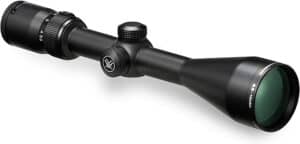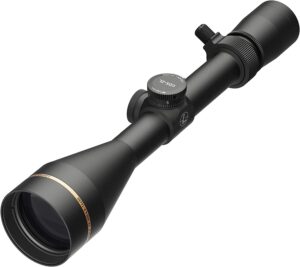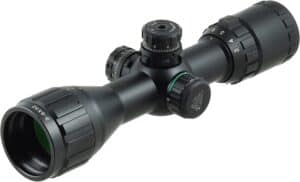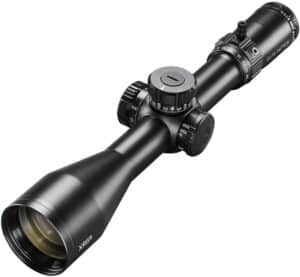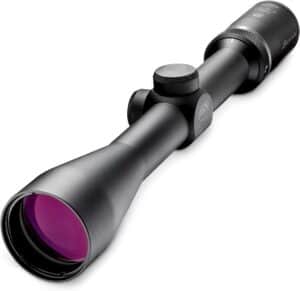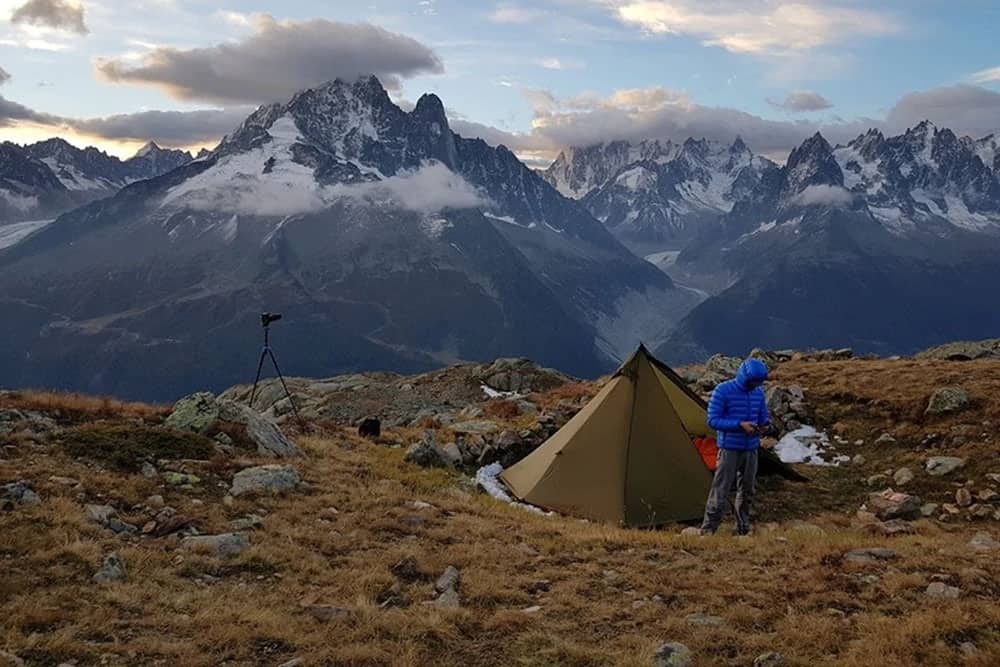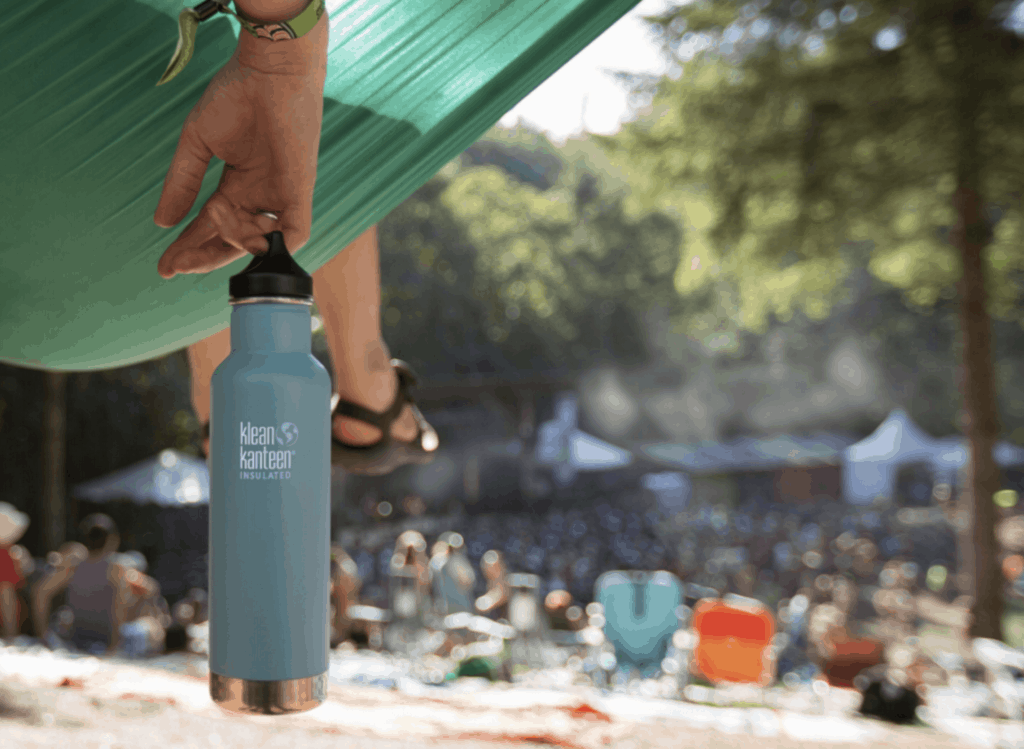Early hunters would have pined for a way to more accurately target and take down their prey from longer distances. A quality rifle scope has the ability to improve your accuracy, range, and distance, not to mention the overall psychological and personal contentment that users receive from a successful hunting trip.
Recent technological advancements have elevated rifle scopes from a mere afterthought to an essential piece of equipment for hunting enthusiasts. Our list of the 7 Best Rifle Scopes will give you plenty of reasons to purchase a new scope before your next hunting trip. Make sure to also read through our Buyer’s Guide and Frequently Asked Questions sections to learn all you need to know before choosing the rifle scope that fits your needs.
1. Vortex Optics Diamondback
This rifle scope is ideal for big game, predator/vermin, muzzleloader, slug shotgun, and long-range applications. It has a 40-millimeter objective lens and offers 4 to 12x magnification. The Diamondback’s lenses are fully multi-coated to provide bright, crystal clear images regardless of the lighting conditions in the field.
The Vortex Optics Diamondback features metal-on-metal precision turrets that give you the ability to zero reset after sight-in. The scope’s precision glide erector system ensures accurate tracking and repeatability while its fast focus eyepiece allows for quick and easy reticle focusing.
2. Leupold VX-3HD
The Leupold® VX-3HD™ Rifle Scope comes with a 3:1 zoom ration and a fast-focus eyepiece. This scope is great for a wide field of view and easy to focus. It features a CDS ZeroLock elevation dial, which allows adjustments without losing zero. The eyepiece allows for easy access to get behind the glass and get a good clear picture.
The scope is made of 6061-T6 aircraft aluminum and is sealed with a glass blend of Argon and Krypton. The scope is extremely well made and is waterproof and fog-proof. The scope also features an illuminated reticle which comes with Motion Sensor Technology which automatically deactivates illumination after 5 minutes of inactivity. Leupold makes quality scopes and this is one of them.
3. UTG BugBuster
The UTG BugBuster is ready to meet all of your shooting needs with 3 to 9x magnification and a 32-millimeter objective lens. Its one-inch tube is emerald coated for maximum light transmission and its lockable and resettable turrets offer ¼ MOA (2) per click adjustment.
This rifle scope comes with a mil-dot reticle that estimates range accurately for optimal aiming and shooting performance. It also features red/green dual illumination for versatile application, a large field of view, and accommodating eye relief.
4. Vortex Optics Viper HS-T
The Vortex Optics Viper HS-T is designed for accurate holds at extended ranges. It contains a 50-millimeter objective lens and is capable of 6 to 24x magnification. The scope incorporates premium, fully multi-coated, extra-low dispersion lenses to bring you excellent resolution and color fidelity.
This rifle scope has exposed target-style turrets that are purposely constructed for precise and repeatable finger-adjustable clicks. Its fast focus eyepiece allows proper reticle adjustments in seconds and its one-piece design makes it waterproof and fog proof for hunting, target shooting, or a variety of tactical applications.
5. Bushnell Tactical Elite
The Bushnell Tactical Elite is designed with the help of military and law enforcement experts and manufactured to put the world’s most powerful optics in the hands of those sworn to defend it. It offers a beautiful design and durability that’s built to last.
New reticles G4P and EQL floating dot reticles are options with this scope. Bushnell updated the magnification lever making it easier to accommodate your rifle and setup. This scope is very clear and easy to focus making it an excellent option for you rifle.
6. Simmons 8-Point
The Simmons 8-Point rifle scope offers high-quality features that make it a great option for even the most strenuous conditions. The QTA eyepiece makes for easy target acquisition and its design is waterproof, fog proof and recoil-proof.
It contains a 50-millimeter objective lens and magnification ranging from 3x to 9x. This rifle scope also comes with fully coated optics and ¼ MOA SureGrip audible-click windage and elevation adjustments for effortless adaptability.
7. Burris Fullfield II
The Burris Fullfield II is another quality scope from Burris at an affordable price. The scope features high quality glass allowing excellent brightness and durability. The scope is made with quality glass and hi-lume multicoating which helps in low light conditions.
The eyepiece is durable and is easy to adjust in the field. The scope is filled with nitrogen that prevents fogging and is waterproof. The tube is made of a 1 piece construction with reinforced quad-seal gas seals. It’s a 3x9x40 mm viariable power in matte black.
—
Buyer’s Guide
Although Galileo famously invented the telescope in 1608, the first rifle optic in the U.S wasn’t invented until sometime between 1835 and 1840 (3). Today’s rifle scopes are the products of more than 300 years of trial and error, technological advancement, and scrutinized testing.
While there are a number of recognizable brands creating excellent rifle scopes, there are also a number of relatively unknown providers that can help beginning hunters get into the game at a cheaper price. If you are searching for a new rifle scope, light transfer, eye relief, field of view, and reticle choice are some critical factors that will help you separate quality scopes from their competition.
Light Transfer
One of the major distinctions between rifle scopes is how well they maintain the level of light that is captured from the lens and then deliver that light to your eye. This is known as “light transfer.” Some scopes outperform others in this category and there’s one main reason: scopes with more lenses typically transfer light worse than scopes with fewer lenses.
Light transfer is essential to your ability to sight and shoot targets, especially in low light conditions. A scope that doesn’t transfer light well will be virtually useless in these conditions, and you know that hunting or shooting in perfect lighting conditions is pretty rare.
The front lens of every scope (known as the ”objective lens”) plays a large role in the amount of light that the scope can capture. This lens is also a big factor in the clarity and distortion of the image you see when you look through the scope. In general, you want to look for a scope that has a larger objective lens, as these tend to offer better light transfer capability.
Eye Relief and Field of View
Have you ever noticed that you can only see a partial image if you place your eye too close or too far from a scope? This is due to eye relief. Every scope is designed to perform differently, and eye relief is defined as the distance your eye needs to be from the scope to still achieve a full view of your target. Most scopes list eye relief in inches. This is an important consideration and will change, most significantly, if the user wears eyeglasses or if you plan to use your scope with sunglasses.
Field of view is usually measured as the area that you can see through a scope at a distance of 100 yards. Scopes with a wider field of view generally make it easier for the user to sight a target. On the other hand, more powerful scopes typically offer a narrower field of view. They do make up for it with improved image clarity and greater distances.
Until you have your shooting method and technique down to a science it is recommended to go with a scope that provides a wider field of view. If you’re generally on target with a high percentage of your shots, you’ll find greater benefit from a more powerful scope. As a rule of thumb, shooters will start to notice a bigger difference in terms of field of view once they have a scope that offers more than 9x magnification.
Reticle Choice
The reticle of your scope is the crosshairs. Reticles come in a variety of different sizes and designs and the best for you will depend on your experience and comfort level. In general, you want to find a sweet spot between reticles that aren’t so thick that they get in the way of your target while avoiding reticles that become nearly invisible in low light conditions.
For longer shots, you’ll want to explore tactical reticles. These reticles contain mil-dots that will aid in calibrating minutes of angle to your target, as well as other helpful markings used by most trained marksmen.
New hunters will benefit most from a dual reticle because it will provide thin centerlines and thicker outer lines. Other options include glowing and electronic reticles. These tend to offer great visibility but may increase the weight of your scope by requiring batteries or regular charging.
Frequently Asked Questions
When it comes to rifle scopes, there are a lot of advanced metrics and buzzwords that manufacturers will throw out to make their products glisten. Our list of Frequently Asked Questions dives further into the details you really need to know to help you make the most educated decision possible on your next rifle scope.
Are there specific manufacturers you recommend?
Beyond the top ten list above, it’s generally recommended to choose from reputable brands when selecting a higher priced item like a rifle scope. There is a variety of cheaper new optics on the market today, but they have rarely been tried and tested for quality like scopes from recognized manufacturers have been. More importantly, most manufacturers with an established reputation offer some sort of warranty to guarantee their product’s quality. The best, of course, offer a lifetime warranty on their optics.
What level of magnification is best?
The best answer to this question depends on the activity you’ll primarily be engaging in. Short range shooting and shooting of moving targets typically requires a low magnification scope. Check out this article that talks about the ideal scope for a high powered rifle. Medium range shooters and game hunters will generally be most successful with a medium range scope. Shooting still targets at long range or targeting vermin is best accomplished with a high-powered, long range scope.
What is the best size for my objective lens?
Like magnification level, the optimal objective lens size depends on how you intend to use it. The objective lens determines the field of view you’ll see through your scope. Therefore, a smaller lens is typically better for game hunting and target shooting. A larger objective lens, on the other hand, is generally preferable for moving targets, bird shooting, and even bird watching.
Is it best to have a ‘fixed’ or ‘variable’ zoom scope?
If you’ll primarily be shooting at the same distances consistently, a fixed zoom scope will provide everything you need. If you’re going to be shooting at various distances, however, you’ll want a scope with variable zoom. Variable zoom scopes offer more versatility while fixed zoom scopes are generally easier for beginners to operate. At the end of the day, the perfect answer to this question comes down to your experience level and personal preference.
Summary
The quality of your rifle scope can be just as important, if not more important, than the actual rifle itself (4). This list of the best rifle scopes will help you select a high-quality scope that’ll improve your range, accuracy, and performance in the field. We hope that you’ve found this article useful and we wish you the best of luck selecting the best rifle scope for your needs.
